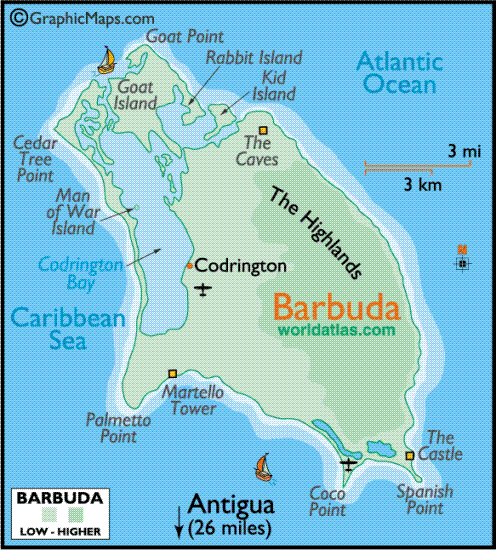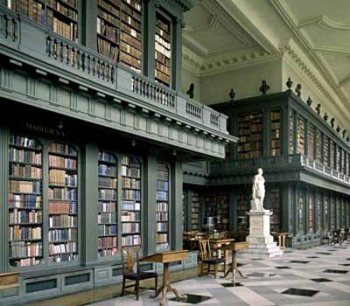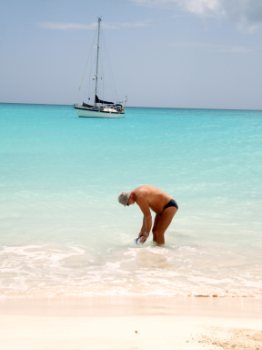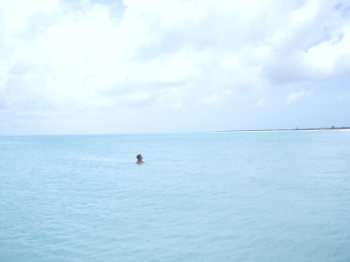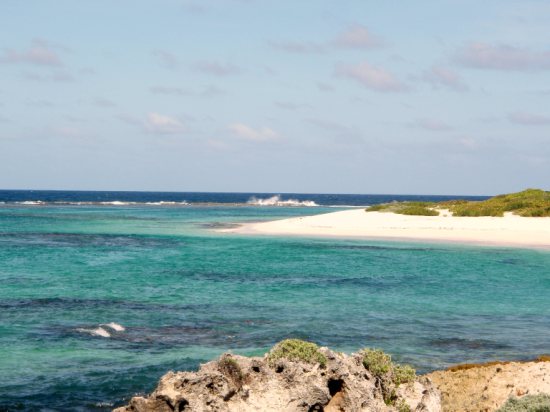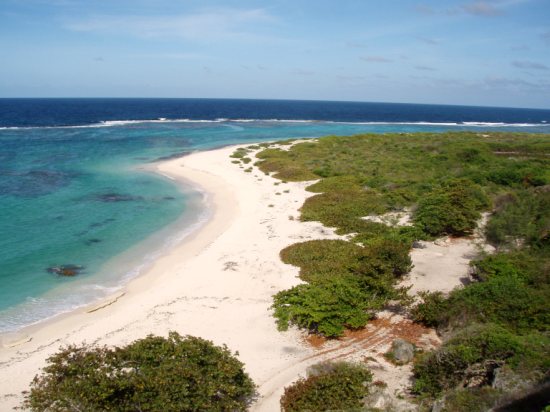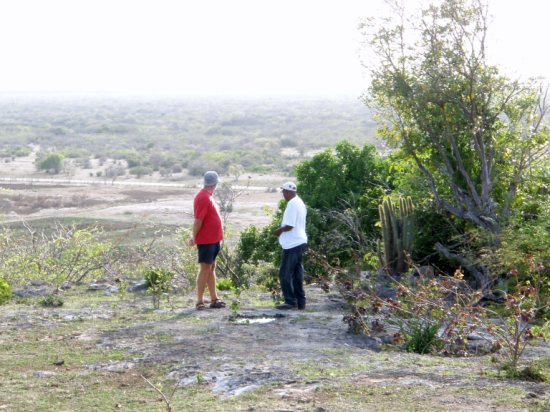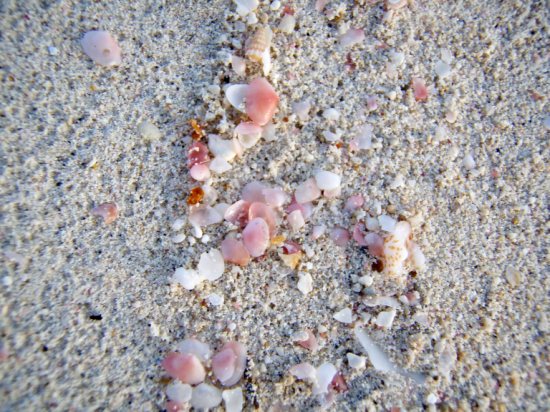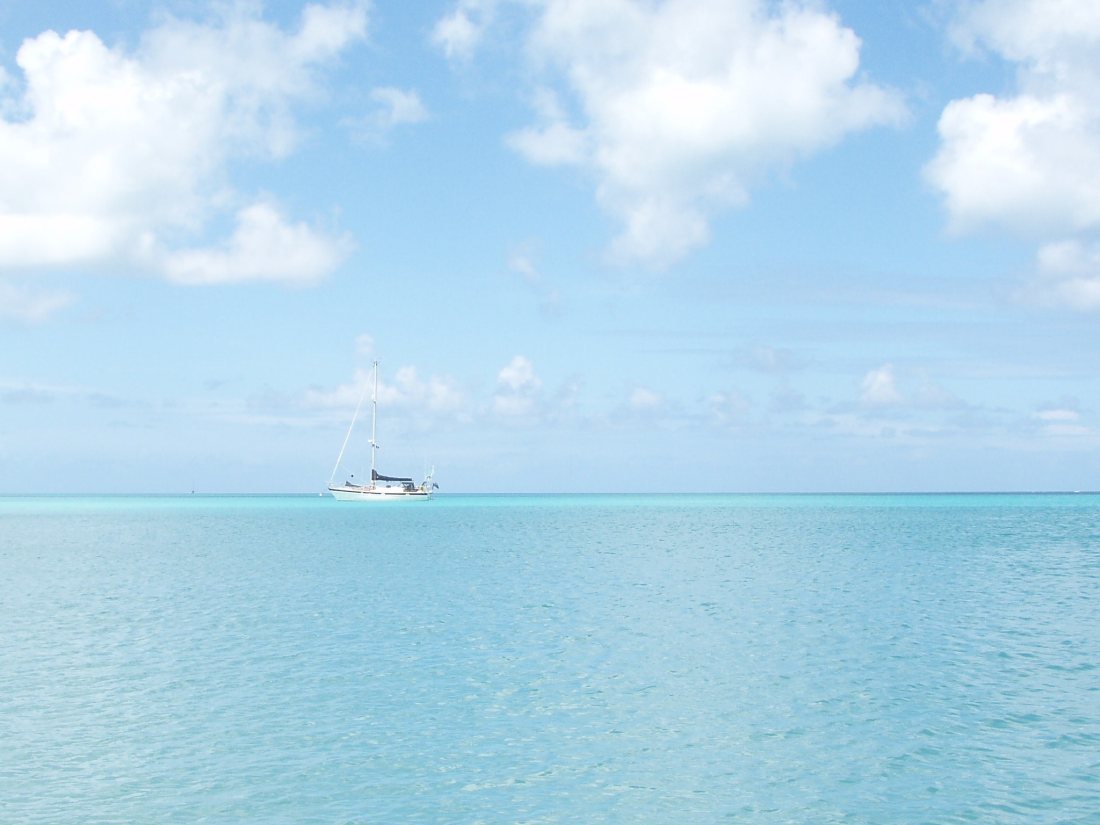Barbuda

|
Barbuda
Barbuda is an island in the Eastern Caribbean, and forms part of the three island state of Antigua, Barbuda and Redonda (an uninhabited island). It has a population of about 1,500 most of whom live in the town of Codrington, the capital and only town. The labour force is about 600 with 400 of these employed with the Barbuda Council. Barbuda measures fourteen miles by eight miles wide.
The Ciboney were the first to inhabit the island of Barbuda in 2400 BC, but Arawak and Carib Indians populated the island when Christopher Columbus landed on his second voyage in 1493. Early settlements by the Spanish and French were succeeded by the English, who formed a colony in 1666.In 1685 Barbuda was leased for fifty years by King Charles II, to brothers Christopher and John Codrington, who had founded the town of Codrington, for their faithful service to the Crown. The Codrington family produced food on their land in Barbuda and also transported slaves as labour for their sugar plantations on Antigua. Their lease was later renewed by Queen Anne with the stipulation that the rent would be "one fat sheep yearly if demanded". No surprise that the Codringtons became the island's most prominent family.
Christopher
Codrington was born in 1668 on the island of Barbados, West
Indies. (His father also named Christopher was Captain-General of the Leeward
Islands).
Educated at Christ Church, Oxford,
Christopher was elected a fellow of All Souls, and subsequently served with the
British forces in Flanders, being rewarded in 1695 with a captaincy in the
Guards. In the same year he attended King William III on his visit to Oxford,
and, in the absence of a public orator, was chosen to deliver the University
oration.
In 1697, on the death of his father,
he was appointed Captain-General and Commander-in-Chief of the Leeward Isles. In
1703, he commanded the unsuccessful British expedition against Guadeloupe. After
this he resigned his governorship and spent the rest of his life in retirement
and study on his Barbados 'estates', as they were euphemistically
known.
Slave Trading and slave
holding: The 'estates' were in fact, a
series of forced labour camps where African slaves, (forcibly removed from
their homeland and transported in slave ships), endured a harsh and brutal
regime under the overseers, producing labour for the Codrington estates on
Antigua who worked the sugar plantations and other high value
commodities for the benefit of the Codrington family. Those who stayed on the
island were chosen for their size, strength, intelligence and expertise.
Codrington's ships were repaired by the best carpenters, the island also boasted
the best coopers, farmers, stockmen and child-bearers as Barbuda for a time was
a "nursery". There was more
than one slave rebellion at Codrington during the 1740's, during which slaves
rose against the managers and overseers. All the slaves were freed in 1834 but
as they had never had any sort of money, outside influence or property they
became a very unique nation of all for one, one for
all.
Location of profits: Codrington died on the 7th of April 1710, bequeathing his slave plantations to the Society for the Propagation of the Gospel in Foreign Parts for the foundation of a college in Barbados, Codrington College, was built in 1714-1742. To All Souls College, Oxford, he bequeathed books worth £6000 and £10,000 in money, for Codrington Library to be built.
Christopher Codrington, Codrington College and Codrington Library.
In 1719, Codrington and the island of
Barbuda had its first census (of both people and livestock), conducted by Sir
William
Codrington
(1715-1790). In the second half of the 18th
century, the first map of Barbuda was made. This
indicates: substantial buildings in the Highland
area a castle in Codrington
a fort at River, now known as the
Martello Tower houses at Palmetto
Point, Coco
Point, and Castle
Hill
eight catching pens
several defensive cannon gun battery
units in the south, north, west, and east two large plantations in the Meadow and Guava area and in the Highlands area
As years went by Barbuda was passed on to Christopher's son, William. To him the land was unsuitable for growing any of the important crops so he decided to raise cattle, hogs and sheep. Barbuda remained with the descendants of Codrington through the emancipation of slaves in 1834 until 1870. After several years of unsuccessful leases, Barbuda became dependant on the nearby island of Antigua and in 1980, seeking independence from the Crown, Barbuda joined with Antigua to become the State of Antigua and Barbuda, granted independence in 1981 but they remain part of the Commonwealth.
Beez Neez anchored off the stunning eleven mile Low Bay beach (on the map the seaward side of where it says Codrington Bay). Skipper washing the picnic plates, while I ponder my navel.
The Chris Doyle Guide Book says
“Unlike most Caribbean islands, Barbuda was never a sugar plantation. It was
used for growing livestock and root crops for the Codrington Estates in Antigua,
and as a hunting ground by the Codrington family. Consequently, the Barbudans
were not closely supervised and retained a tough independent spirit. They came
to terms with the island environment, existing through co-operative efforts in
fishing, subsistence farming, and hunting. When emancipation came, they stayed
on the island, living in a co-operative way. Land is held communally and there
is so much that no one fights over it. It has also been the key to the Barbudans
keeping control over their own island. Since there is no individual land
ownership, land cannot be sold to outsiders. England railroaded a reluctant Barbuda into joining Antigua when the two islands became independent. Since then there have been several ambitious projects to develop the island and “bring it into the 21st century,” an idea strongly resisted by many Barbudans who see no benefit to changing their traditional lifestyle for one of being dressed up and employed to wait on tourists, in exchange for the dubious benefits of better roads, more cars and Kentucky Fried Chicken. It is difficult to know how long they can resist outside pressure. Vast quantities of sand have already been shipped to Antigua, and Barbudans often have to fight other schemes that are dreamed up without their approval. One battle involved a plan to put in a big desalinisation plant. Work started, but the Barbudans, fearing possible damage to their pristine, fish filled lagoon, called a halt. Another time, the Antigua Government, allowed a huge hotel project to begin on Spanish Point. Mobile construction offices were erected. The Barbudan people wanted to keep this land as a park. They went en masse to the project and shoved the offices over the cliff. It will remain a park. Many people would love to get their hands on Barbuda’s beach front real estate, but the Barbudans are resisting strongly“. We love the spirit of the people, on the evening of 'the shoving of the offices' everyone had to go to the police station. There are only two holding cells, rarely ever used, too many people to process, so everyone told to go home. Marvellous.
The north coast. Two Foot Bay
Geography: Land area: 160.56 km²
Capital and largest town : Codrington
(capital of Barbuda), est. pop. 1,500 Climate: tropical marine; little seasonal
temperature variation. Terrain: mostly coral limestone islands unlike the rest of the
Caribbean which is mostly volcanic. Elevation extremes: Lowest point: Caribbean
Sea 0 m.
Highest point: Highlands 38 m.
Climate: In January and February, the coolest months, the average daily high temperature is 81°F (27°C). In July and August, the warmest months, the average daily high is 86°F (30°C).
Barbuda is home to the domestic animals brought here by ship - cows, sheep, chickens, African black-bellied goats, horses and donkeys. All horses are owned but can free graze anywhere, horse racing takes place twice a month on a Sunday. Donkeys are wild and can be seen all over the island. People only have fences around their property to keep animals out, there is no crime here. Everyone knows everyone and there are no secrets, no one locks their houses or cars. There is a buzz in the air as everyone prepare for the Carnival at the end of the month. Animals brought in to hunt by the Codringtons include The European Fallow Deer, White Tailed Deer and Wild Boar. Deer do not live on any other island in the Eastern Caribbean, but they have thrived on Barbuda and Guiana Island (off the north coast of Antigua) for centuries. Deer are not indigenous to Antigua and Barbuda, but then no other mammal appears to be except perhaps a bat or two. It is thought European Fallow Deer were first introduced from Norway into England at the time of James I. It is not known exactly when the leasees - the Codringtons, introduced them, but there were as many as a thousand head in 1740 and by 1827, they were a "nuisance" for they stripped the vegetation. In 1784, three thousand were reported, whereas a century later, there were only about three hundred. Deer were introduced onto Guiana Island sometime after 1811, when Bethel Codrington bought it for raising stock. At the beginning of the century the hunting licence fee was one pound for three deer, and the season was from January to April and July to October. Unlike other Caribbean islands the ships did bring in rats. There is however a very rare indigenous mangrove rat, scientists are hoping to study, IF they can find this elusive creature. Since 1904 it has been illegal to bring in mongoose to Barbuda. Birds include the Magnificent Frigate Bird, Cormorant, Snipe, Ibis, Kingfisher, Tropical Mockingbird, Brown Pelican, Tern, Oyster Catcher, the unique Barbuda Warbler and the endangered West Indian Whistling Duck. Other species include the Mangrove Crab, Red Footed Tortoise, Guinea Fowl and millions of Hermit Crabs. Sea Turtles return each year to lay their eggs. Dolphins have been seen herding schools of fish into the reefs. The Lagoon. If you draw a line on the map from Martello Tower in the south, up through Codrington town and north to the Caves - everything on the left - about a third of the island is Codrington Lagoon National Park. The lagoon itself is a nursery for lobster or crawfish as they are too laid back to have pincers and many different types of marine fish and Mangrove Crabs. The National Park supports about up to 60% of the islands economy through provision of jobs, sale of fish, tourism and lobster. They have an interesting way of catching them here. Bunches of sticks are placed in the lagoon attracting the lobster, after sufficient time the area is circled with nets and the sticks removed leaving the lobster trapped. Hunting is allowed under permit in season. The Reefs. Barbuda boasts mile upon mile of reef, final resting place of many wrecks. These reefs are also home to thousands of lobster, approximately 150,000 of them are caught and exported to France via Guadeloupe each year. In fact they are the staple diet of most of the islanders - so common that our guide Calvin is so sick of them he has stopped eating them altogether. WOW.
Bear and our guide Calvin overlooking Barbuda to the north from "Willybob". The reason the beaches have a pinkish glow in the sunshine is due to the thousands of tiny pink shells and pieces of broken shell.
An underdeveloped island with its coastline washed with pristine waters of the Caribbean Sea is a developer's paradise. But with a land mass of 62 square miles, Barbudans pride themselves in the fact that the island is untouched and unspoilt by harmful development activities that often destroy the paradise concept. As Barbudans enter a new phase, the Council has devised a Master Plan which will see the island maintaining it's "paradise island" brand - a brand which will always be sustainable. The vision of the people and the Government is to allow for growth in the area of eco-tourism and encourage high-end, low density tourism-based development. Plans for a new airport, a community centre, a museum, a community college and a fisheries project are on the drawing board.
ALL IN ALL THE MOST STUNNING BEACHES WITH THE MOST BEAUTIFUL WATER I HAVE EVER SEEN - A QUIET, UNSPOILT BACK-WATER. |
